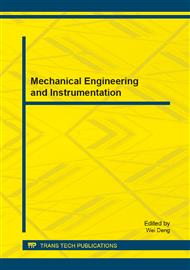p.40
p.46
p.52
p.59
p.64
p.70
p.75
p.80
p.86
Linear Polarization Method Research of Quantitative Detection Based on Concrete Reinforcement Corrosion
Abstract:
In order to achieve internal reinforcement of concrete bridges quantitative nondestructive testing, this paper has adopted linear polarization method to test reinforcement passivation in the pore solution of simulated concrete and corrosion current density value in the corrosion process under different external environments and has built calculation model for amount of reinforcement corrosion based on detection signal. That is to say a new idea, which makes the evaluation results more effective, has been put forward to efficiently correspond with reinforcement corrosion ratio with potential signal, and the quantification evaluation for damage of reinforced concrete can be carried directly. It has modified theoretical model and analyzed the error through weightlessness tests. The research result shows that the calculation model after modified can significantly improve the detection accuracy for the actual rate of reinforcement corrosion. CLC: TU528.33 Document code:
Info:
Periodical:
Pages:
64-69
Citation:
Online since:
February 2014
Authors:
Price:
Сopyright:
© 2014 Trans Tech Publications Ltd. All Rights Reserved
Share:
Citation:


